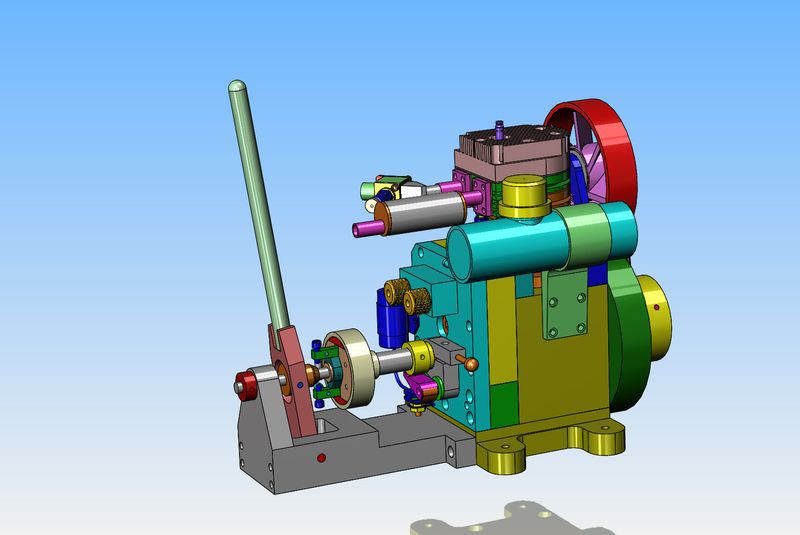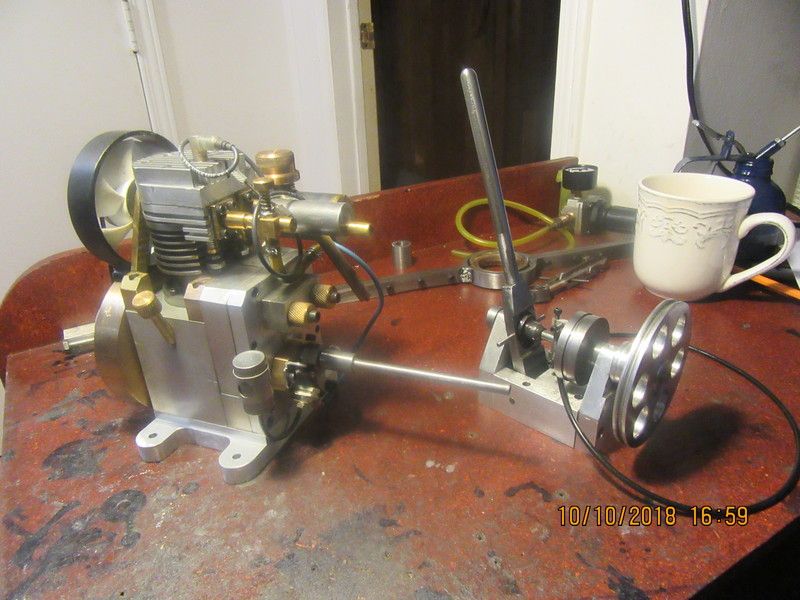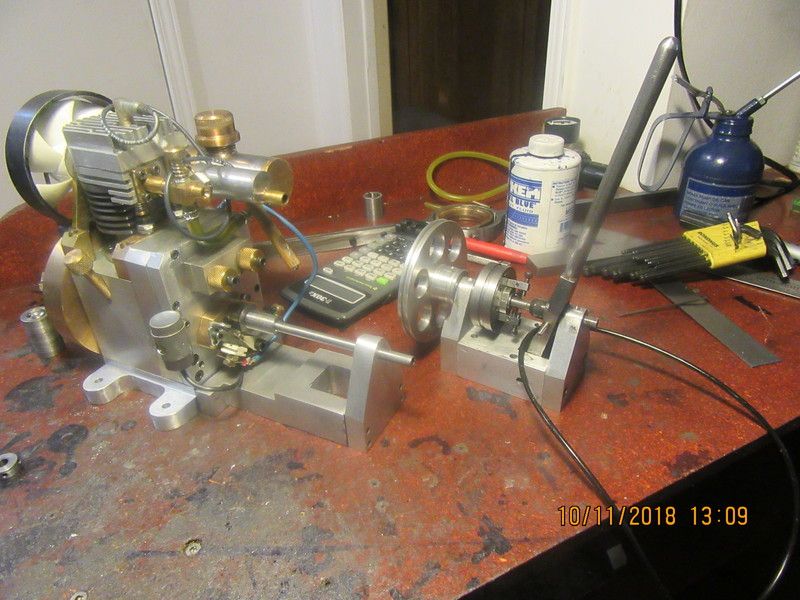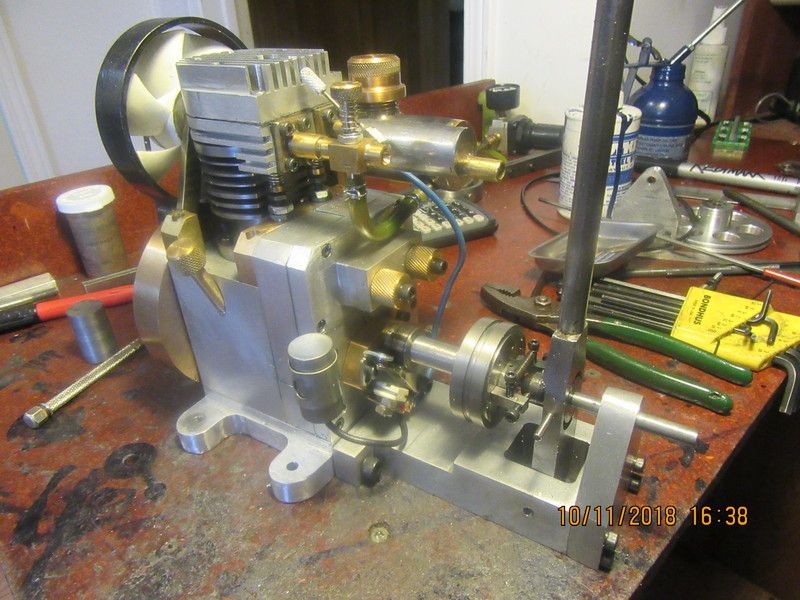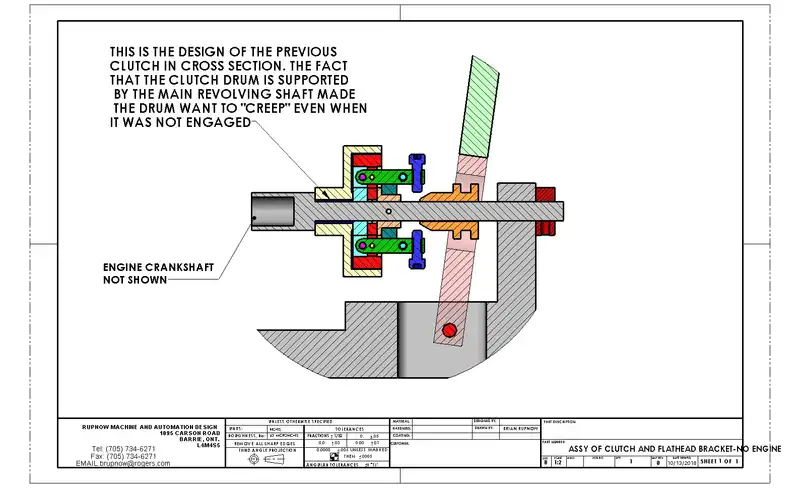A few years ago I had my single cylinder flathead i.c. engine featured in Home Shop Machinist magazine. It was built by a number of people, and since then has mostly set on a shelf in my office collecting dust. I have been messing around with various styles of manual clutch this last month or so, and have decided to install a manual clutch on the flathead engine. I designed a "line shaft clutch" last year, and in it's final guise as an expanding shoe clutch it worked so well that it has become my favourite style of clutch. I am going to modify the clutch and make it a direct drive from the crankshaft of the engine.
